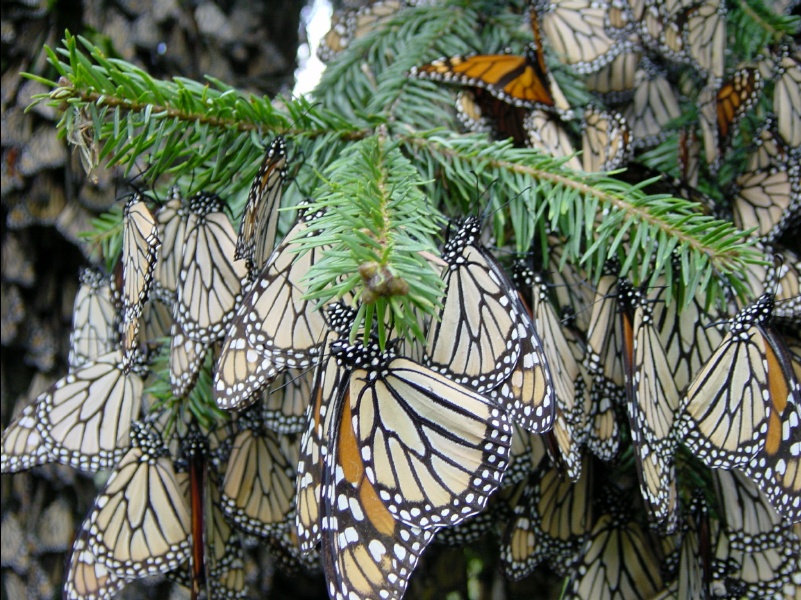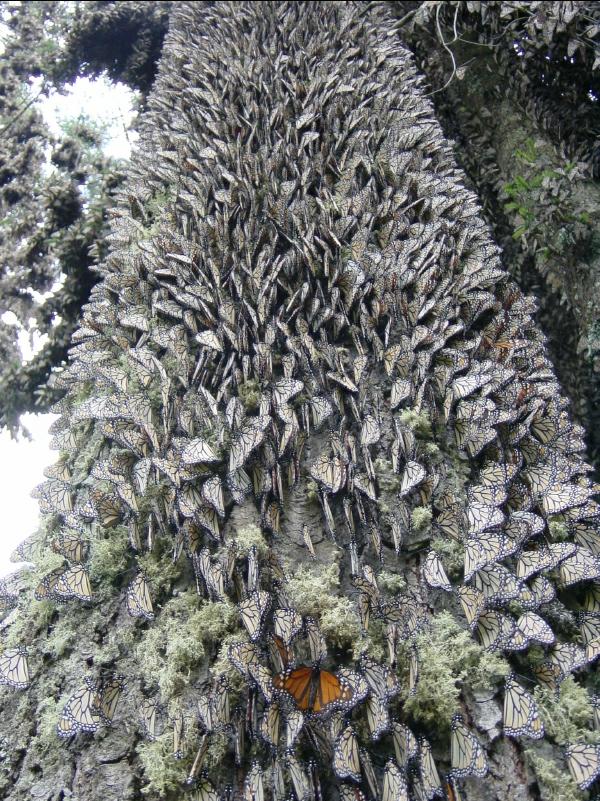| |
Monarch
Butterfly Migration Update: February 17, 2006
Today's
Report Includes:
|
Cold-Blooded
Creatures Save Energy in the Cold
Last week, Challenge Question #2 asked you to explain why monarchs
burn less energy in cold temperatures. After
all, we're just the opposite. People burn more
energy in cold temperatures, trying to keep warm.
"Because
their bodies slow down," answered Gaby, a second grade student
in Massachusetts, just like an expert.
“Since
monarchs (and other insects) are cold-blooded, they do not use
much energy when they are in a cool environment,” says monarch
expert Dr. Karen Oberhauser.
As
warm-blooded beings, this may be hard for us to grasp. Learn what
it means to be cold- or warm-blooded. Then try some activities so
you can see, feel, and think about the differences.
|
| Learn
About Cold-Blooded Creatures! |
|
|
|
Go
to the Infrared Zoo!
Wild images of cold-blooded and warm-blooded creatures have
been captured! >>
|
|
No
Food for Five Months! How Do Scientists Know?
Scientists say that the monarchs can survive all winter eating little
or no food at all. Yet no scientist
has ever watched a butterfly for the full overwintering season.
- Ask
yourself as you read this update today, "How do scientists
know?" Look for the evidence that supports this amazing theory.
|
 |
How
Much Fat Left in February?
Look carefully at this graph:
- What
has happened to the monarchs since they arrived in November?
- How
much fat (lipids) does the typical monarch have left now?
- What
can you infer from this graph about the monarch's winter habitat?
Write
down your thoughts! |
 |
| So
Many Monarchs...
Just look at all of those butterflies. It's impossible
to count them! Scientists estimate that anywhere from 10 to 50 million
monarchs share a single hectare. (What is a hectare?)
...and
So Few Flowers
When he talks about the monarch's winter habitat, Dr. Lincoln Brower
says:
“These
high altitude sites have few flowers on which butterflies can
feed."
If
the monarchs were all hungry and looking for food, imagine the millions
of flowers they would need! |
 |
| Try
This! Putting Large Numbers into Perspective
It's hard to picture such large numbers. Let's assume a single sanctuary
contains 50 million monarchs. Now find 50 million people who live
near you:
- Find
the population of your state
or province.
- Then
start adding!
- Add
the population of as many neighboring states or provinces you
need until you reach 50 million.
Print
a copy of the map to the right. Shade each state or province as
you add its population.
- Where
are your 50 million nearest neighbors?
|
| Where
Are Your 50 Million Nearest Neighbors? |
| 
|
|
| A
Cool Habitat Feature: No Need for Food
The monarch’s winter habitat is unique: rather than provide
food for millions upon millions of butterflies for five long months,
its cool temperatures let the monarchs SAVE energy.
Challenge
Question #3
"If it’s true that monarchs do not eat while they are
in Mexico, then when and where DID they get the food energy that
they are burning now?"
- To
respond to this Challenge Question, please follow these instructions.
|
| Habitat |
| The
place and conditions where all of an organism’s needs
for life are met.
Food,
water, shelter and space are key components of an organism’s
habitat. |
|
- One
hectare equals 2.47 acres.
The Next
Monarch Migration Update Will Be Posted on February 24, 2006
Copyright 2006 Journey North. All Rights
Reserved.
Please send all questions, comments, and suggestions to our
feedback form
 





|

![]()
![]()
![]()
![]()
![]()
![]()











